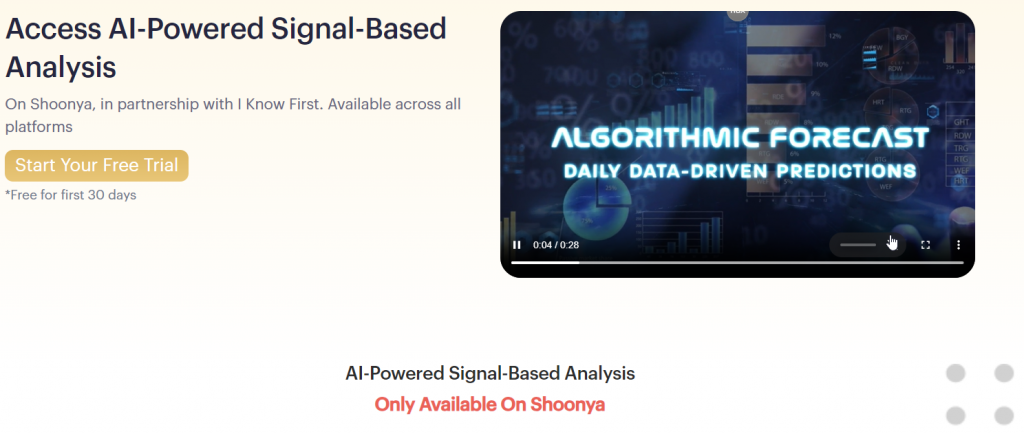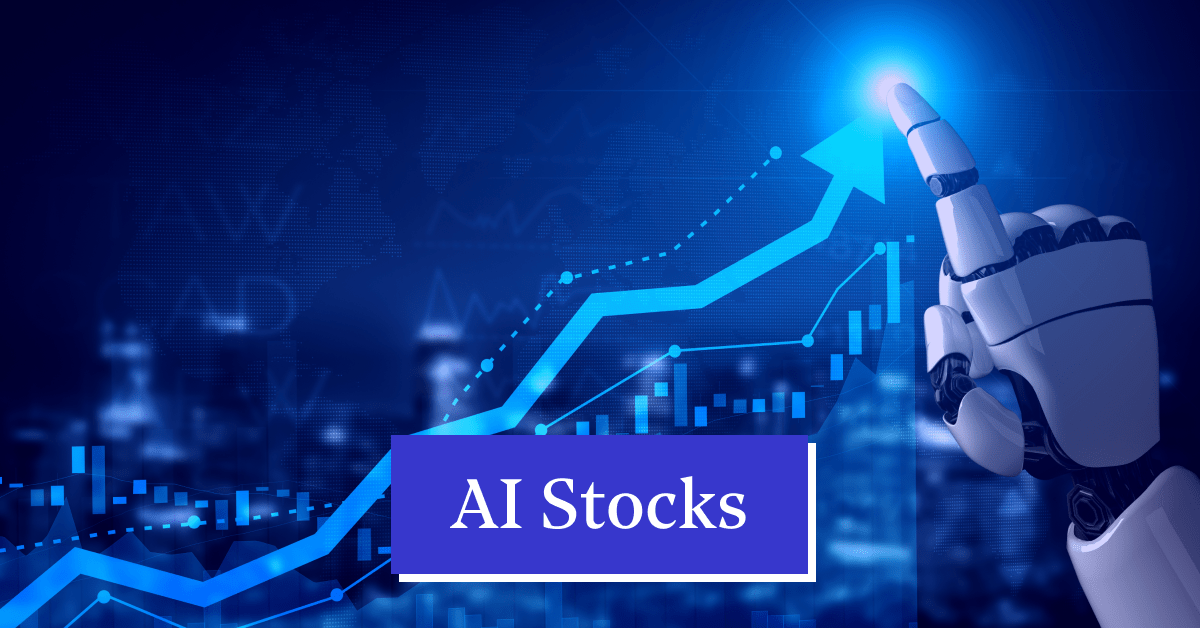20 New Suggestions For Deciding On Getstocks Ai Websites
20 New Suggestions For Deciding On Getstocks Ai Websites
Blog Article
Top 10 Tips For Assessing The Market Coverage Of Ai Trading Platforms For Predicting Stocks
Market coverage is an essential aspect to consider when looking at AI trading platforms for stock prediction or analysis in that it defines the range and depth of markets and assets that you can access. Market coverage is crucial because it permits you to diversify, discover the world's markets, and adjust different trading strategies. Here are 10 ways on how to evaluate the market coverage of platforms.
1. Evaluate Supported Asset Classes
Stocks: Make sure that the platform includes the major exchanges for stocks (e.g., NYSE, NASDAQ, LSE, HKEX) and also includes small-cap, mid-cap, and large-cap stocks.
ETFs. Verify that the platform provides a range of ETFs, so you gain exposure to a variety of.
Futures and options. Make sure the platform is able to handle derivatives, such as options, futures, and other instruments leveraged.
The commodities and forex. Find out if the platform provides forex pairs, precious and base metals, energy products, and agricultural products.
Cryptocurrencies - Make sure to check whether your platform is compatible with major copyright like Bitcoin, Ethereum and altcoins.
2. Check the coverage area
Global markets. Make sure your platform is able to cover the most important global markets, such as North America Europe Asia-Pacific and emerging markets.
Focus on regional markets: Find out if a platform focuses on certain markets or regions that align with your goals in trading.
Local exchanges. Make sure the platform supports exchanges local or regional for your area.
3. Compare Real-Time Data with Delayed Data Delayed Data
Real-time data: Ensure that the platform provides real-time information for trading, and for making timely decisions.
Data delayed: Find out whether you are able to get delayed data for no cost, or at a reduced cost. This might be enough for investors who are looking to invest long-term.
Data latency - Make sure that the platform is able to reduce the latency of real-time feeds. This is crucial for traders with high frequency.
4. Analyze historical data availability
The depth of the historical data Make sure the platform provides extensive historical data (e.g. 10, 10+ years) to backtest and analyze.
Find out the granularity in historical data.
Corporate actions: Verify whether historical data reflects dividends, stock splits, and other corporate actions.
5. Check market depth and order details
Data Level 2: Make sure the platform offers Level 2 (order book depth), for better price discovery.
Bid-ask Spreads: Make sure that the platform shows live spreads between bid and ask for accurate pricing.
Volume data: Make sure that your platform provides detailed volume data to analyze market liquidity and market activity.
6. Examine the coverage of Indices Sectors
Major indices : Ensure you have a platform that contains the main indices. (e.g. S&P 500, NASDAQ 100, FTSE 100 ) This is essential for benchmarking and index-based strategies.
Data from specific sectors for specific analysis, check whether the platform includes data from specific sectors (e.g. technology, health care technology).
Custom-made indexes. Check if you can build or monitor custom indices according to your own criteria.
7. Integrate Sentiment and News Data
News feeds : Make sure you have a platform that allows live news feeds, preferably from reliable media outlets (e.g. Bloomberg and Reuters) to cover the most important market events.
Sentiment analysis Check to see if your platform has sentiment analysis tools that utilize data from news, social media, sources, or another source of data.
Strategies based on events: Check whether the platform supports events-driven trading strategies (e.g. earnings announcements and economic reports).
8. Check for Multimarket Trading Capabilities
Cross-market trading: Ensure the platform is able to trade across multiple assets and markets from a single interface.
Currency conversion: Check if your platform supports multiple-currency trading and automatic currency conversion.
Support for different time zones Check that your platform is able to trade on global markets in various time zones.
9. Review the coverage of other sources
Check for alternative data sources.
ESG data: Check whether the platform is equipped with environmental Governance, Social and Governance (ESG) information to aid in socially responsible investment.
Macroeconomics data: For fundamental analysis, ensure the platform is stocked with macroeconomic indicators like GDP (gross domestic product) as well as inflation rates and interest rates.
Check the User Feedback and Review the Market Reputation
User feedback is a fantastic method of evaluating the market the platform's coverage.
Verify the credibility of the platform, in terms of its coverage or awards for industry.
Look for testimonials that demonstrate the platform's effectiveness in certain areas and asset classes.
Bonus Tips
Free trial period: Try the coverage in the marketplace of the platform as well as its data quality with a demo or free trial.
API access Check if the API of the platform permits customized analysis by using market data.
Customer support: Ensure the platform offers support for market-related queries or issues with data.
Following these tips can help you assess the market coverage of AI software for predicting and analyzing stocks. You will be able pick one that provides access to markets and data for efficient trading. Market coverage is important to diversify portfolios, find new opportunities, and adjust to changing market conditions. View the recommended ai stock picker blog for blog advice including ai trade, ai stocks, ai stock trading, canadian ai stocks, best ai trading software, ai stock, chart analysis ai, ai investing app, ai trading tools, trading ai and more.
Top 10 Tips To Evaluate The Social And Community Features Of Ai Stock Trading Platforms
Knowing how users communicate, interact, and grow is vital to comprehending the AI-driven trading and platform for stock predictions. These features enhance the user experience through providing valuable assistance. Here are 10 top tips for evaluating the community and social aspects of these platforms.
1. Active User Group
TIP: Make sure that the platform is backed by a community of users engaged in ongoing discussions, sharing insight and giving feedback.
Why: A vibrant community is a place where users can develop and share knowledge.
2. Discussion Boards and Forums
Verify the activity and the quality of message boards or discussion forums.
Forums provide a place for users to ask and respond to questions, share strategies and discuss market trends.
3. Social Media Integration
Tip: Check if the platform integrates with social media channels for sharing insights and updates (e.g. Twitter, LinkedIn).
Why social media integration can increase engagement and provide current market updates in real time.
4. User-Generated Materials
Find features that allow you to create and share content. For instance, you can create blogs, articles or trading strategies.
Why: User-generated content creates an environment of collaboration and offers different perspectives.
5. Expert Contributions
See if any experts from the industry, like market analysts or AI experts, have contributed to the project.
The reason: Experts' opinions provide credibility and depth for discussions in the community.
6. Real-time chat and Messaging
Tips: Examine the possibility of real-time chat or messaging features to facilitate instant communication between users.
Why: Real-time interaction facilitates quick information exchange and collaboration.
7. Community Moderation Support
Tip: Evaluate the level of support and moderating offered by the community.
Why? Effective moderation helps to create a positive and respectful atmosphere. Support is available to resolve issues quickly.
8. Webinars and Events
Tip - Check to see whether the platform allows live Q&A sessions with experts, webinars and other events.
Why? These events are an excellent opportunity to gain knowledge about the field and to have direct contact with professionals.
9. User Reviews and comments
Look for platforms that let users write reviews or leave feedback on their community features and platforms.
Why? The feedback of users can help determine strengths and areas for improvement in the ecosystem.
10. Gamification and Rewards
Tip: Check to see whether your platform supports the ability to gamify (e.g. leaderboards, badges) or rewards given for active participation.
Gamification can be a powerful method to encourage users' engagement with the community.
Bonus Tip on Privacy and Security
To ensure the security of data users as well as their activities, make sure that community and social features are protected by secure security and privacy measures.
You can evaluate these features to decide whether the AI trading and stock prediction platform offers an environment that is friendly and helps you trade. See the most popular trade ai for more recommendations including getstocks ai, chatgpt copyright, incite ai, ai trading platform, copyright advisor, ai stocks to invest in, ai trading app, ai investment app, stock ai, investment ai and more.